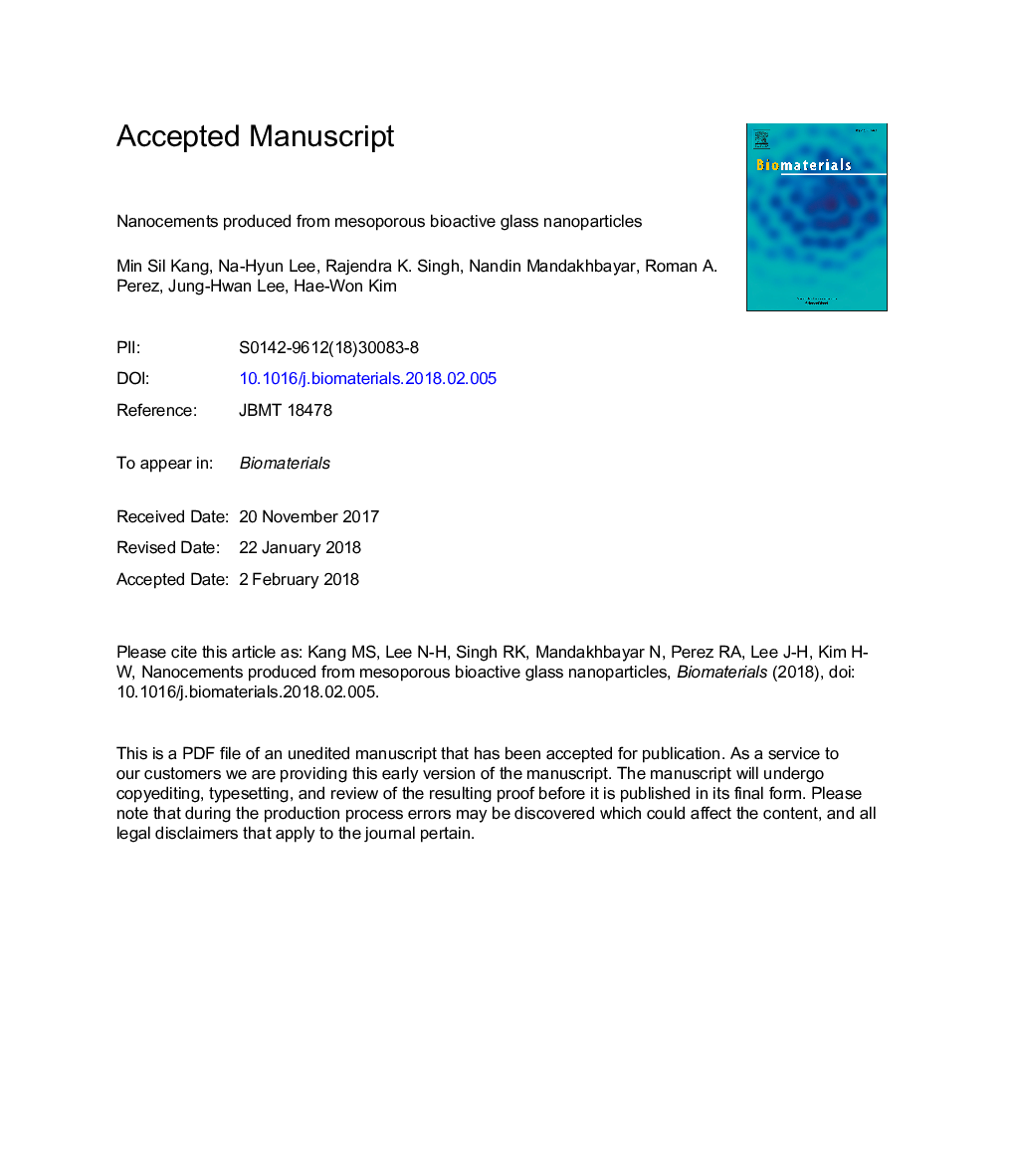| کد مقاله | کد نشریه | سال انتشار | مقاله انگلیسی | نسخه تمام متن |
|---|---|---|---|---|
| 6484610 | 1416105 | 2018 | 40 صفحه PDF | دانلود رایگان |
عنوان انگلیسی مقاله ISI
Nanocements produced from mesoporous bioactive glass nanoparticles
دانلود مقاله + سفارش ترجمه
دانلود مقاله ISI انگلیسی
رایگان برای ایرانیان
کلمات کلیدی
موضوعات مرتبط
مهندسی و علوم پایه
مهندسی شیمی
بیو مهندسی (مهندسی زیستی)
پیش نمایش صفحه اول مقاله

چکیده انگلیسی
Biomedical cements are considered promising injectable materials for bone repair and regeneration. Calcium phosphate composition sized with tens of micrometers is currently one of the major powder forms. Here we report a unique cement form made from mesoporous bioactive glass nanoparticles (BGn). The nanopowder could harden in reaction with aqueous solution at powder-to-liquid ratios as low as 0.4-0.5 (vs. 2.0-3.0 for conventional calcium phosphate cement CPC). The cementation mechanism investigated from TEM, XRD, FT-IR, XPS, and NMR analyses was demonstrated to be the ionic (Si and Ca) dissolution and then reprecipitation to form Si-Ca-(P) based amorphous nano-islands that could network the particles. The nanopowder-derived nanocement exhibited high surface area (78.7â¯m2/g); approximately 9 times higher than conventional CPC. The immersion of nanocement in simulated body fluid produced apatite nanocrystallites with ultrafine size of 10â¯nm (vs. 55â¯nm in CPC). The ultrafine nanocement adsorbed protein molecules (particularly positive charged proteins) at substantial levels; approximately 160 times higher than CPC. The nanocement released Si and Ca ions continuously over the test period of 2 weeks; the Si release was unique in nanocement whereas the Ca release was in a similar range to that observed in CPC. The release of ions significantly stimulated the responses of cells studied (rMSCs and HUVECs). The viability and osteogenesis of rMSCs were significantly enhanced by the nanocement ionic extracts. Furthermore, the in vitro tubular networking of HUVECs was improved by the nanocement ionic extracts. The in vivo neo-blood vessel formation in CAM model was significantly higher by the nanocement implant when compared with the CPC counterpart, implying the Si ion release might play a significant role in pro-angiogenesis. Furthermore, the early bone forming response of the nanocement, based on the implantation in a rat calvarial bone defect, demonstrated a sign of osteoinductivity along with excellent osteocondution and bone matrix formation. Although more studies remain to confirm the potential of nanocement, some of the intriguing physico-chemical properties and the biological responses reported herein support the promise of the new 'nanopowder-based nanocement' for hard tissue repair and regeneration.
ناشر
Database: Elsevier - ScienceDirect (ساینس دایرکت)
Journal: Biomaterials - Volume 162, April 2018, Pages 183-199
Journal: Biomaterials - Volume 162, April 2018, Pages 183-199
نویسندگان
Min Sil Kang, Na-Hyun Lee, Rajendra K. Singh, Nandin Mandakhbayar, Roman A. Perez, Jung-Hwan Lee, Hae-Won Kim,